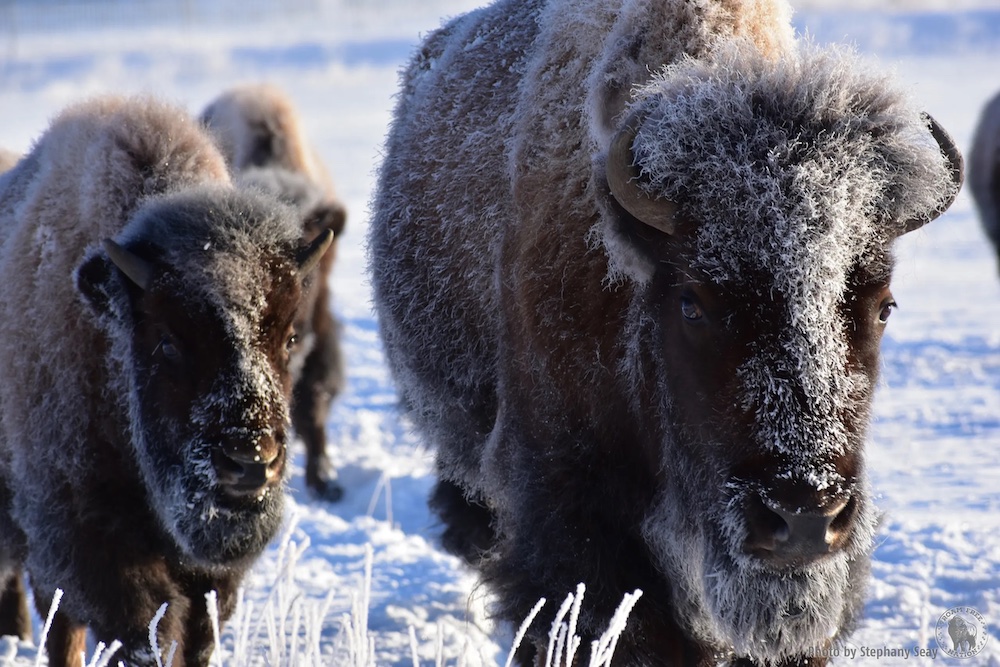
- Details
- By Stephany Seay
Guest Opinion. Gov. Greg Gianforte’s lawsuit against Yellowstone National Park’s bison management plan represents Montana livestock interests — not the vast majority of Montanans, who support restoring wild, migratory buffalo restored in the state.
The brucellosis boogey-man argument — Gianforte’s far-fetched claim wild bison pose a major disease threat to cattle — is old and is full of holes. It also lacks scientific support. The disease arrived in North America through imported cattle and entered the Yellowstone buffalo herds by erroneous human actions. No documented cases exist of wild buffalo transmitting brucellosis to livestock, even prior to the expired Interagency Bison Management Plan. Montana livestock interests oppose quarantine, which, while a domestication process, produces brucellosis-free buffalo. Meanwhile, elk, who have transmitted brucellosis to livestock dozens of times, are free to roam. This issue has never been about brucellosis. It is a centuries-old range war about the grass and who gets to eat it.
Montana actively participated in Yellowstone’s new bison management plan. State officials had every opportunity to submit comments and attend webinars beginning in January 2022. They have met regularly with Yellowstone officials as well as other Interagency Bison Management Plan cohorts. Gianforte’s feedback to Yellowstone during the planning process grossly altered the Draft Environmental Impact Statement (EIS), as well as the Final EIS and Record of Decision. Despite public comments favoring Alternative 3 by more than 75%, the park chose Alternative 2. I’d call that input that was caved to.
Roam Free Nation doesn’t care much for the new bison management plan either, but for completely opposite reasons than Gianforte and his livestock cronies.
And why should Gianforte care if the population increases? Nearly every single buffalo who migrates into Montana is gunned down by state and treaty hunters. The Montana Dept. of Livestock has barely lifted a finger in over a decade. Now they have mainly Native American tribes doing their dirty work, using treaties to facilitate the destruction of the last wild buffalo.
The governor’s complaint claims Yellowstone’s buffalo population is too high, contradicting Yellowstone’s senior bison biologist, Chris Geremia, who stated Yellowstone alone can sustain upwards of 11,000 buffalo. Claims that buffalo are “harming” habitat in the park also conflict with research by Yellowstone’s former senior bison biologist, Rick Wallen, who found buffalo don’t use all the available habitat within the park.These animals create and manage their own habitat — which they have done for hundreds of thousands of years. It’s what they do. Wild, migratory buffalo are the true stewards of grasslands and prairies.
The Yellowstone population faces significant conservation challenges. The International Union for the Conservation of Nature lists bison as “near threatened.” Montana Fish, Wildlife & Parks (MFWP) — shockingly, a plaintiff in the suit — classifies buffalo as a Tier 1 species “ in greatest conservation need.” The Montana Heritage Program and MFWP have listed bison as a species of concern, considered to be at risk. The U.S. Fish & Wildlife Service is considering the Yellowstone herds for Endangered Species Act protection.
Wild bison advocates have gotten too soft on Montana’s livestock interests. Given Gianforte’s crybaby actions, it’s time to put them back in the hot seat.
Stephany Seay is the co-founder of the Montana-based and Native-led nonprofit Roam Free Nation.
Help us defend tribal sovereignty.
At Native News Online, our mission is rooted in telling the stories that strengthen sovereignty and uplift Indigenous voices — not just at year’s end, but every single day.
Because of your generosity last year, we were able to keep our reporters on the ground in tribal communities, at national gatherings and in the halls of Congress — covering the issues that matter most to Indian Country: sovereignty, culture, education, health and economic opportunity.
That support sustained us through a tough year in 2025. Now, as we look to the year ahead, we need your help right now to ensure warrior journalism remains strong — reporting that defends tribal sovereignty, amplifies Native truth, and holds power accountable.
 The stakes couldn't be higher. Your support keeps Native voices heard, Native stories told and Native sovereignty defended.
The stakes couldn't be higher. Your support keeps Native voices heard, Native stories told and Native sovereignty defended.
Stand with Warrior Journalism today.
Levi Rickert (Potawatomi), Editor & Publisher
